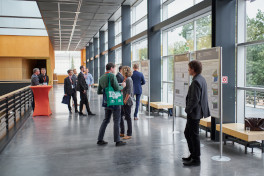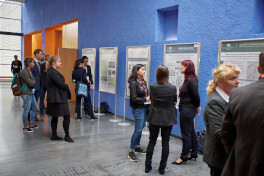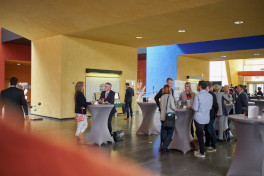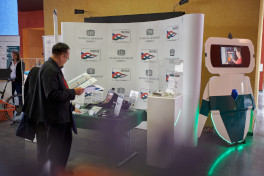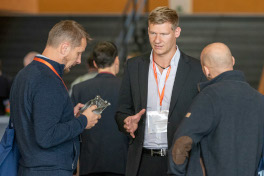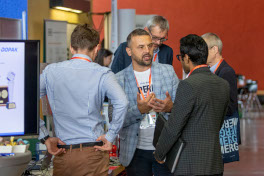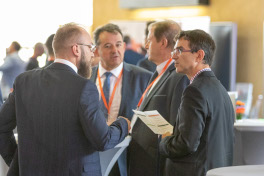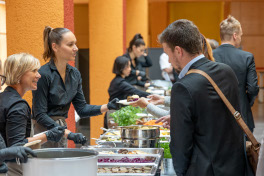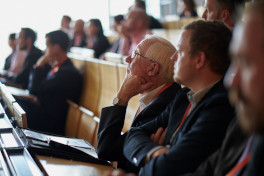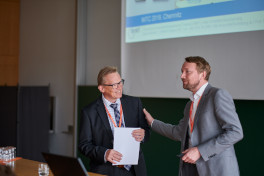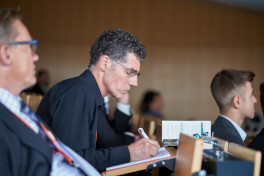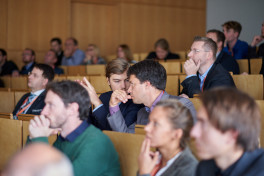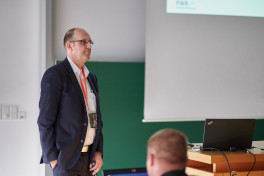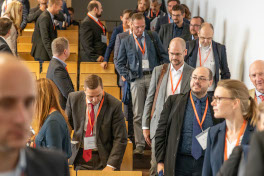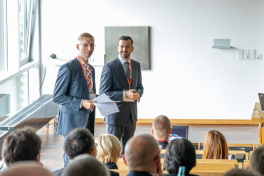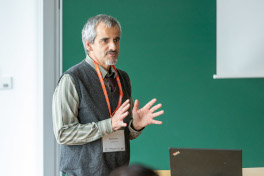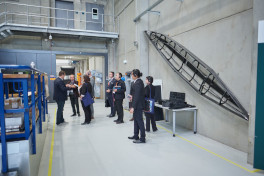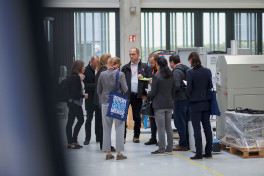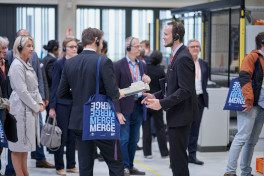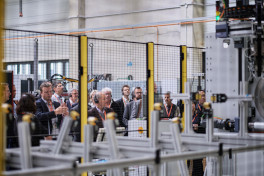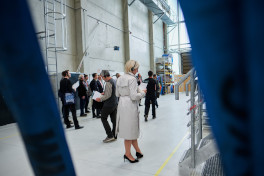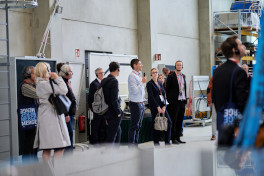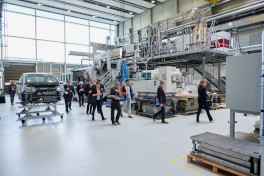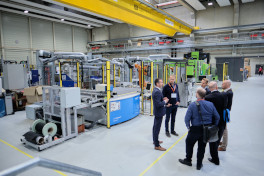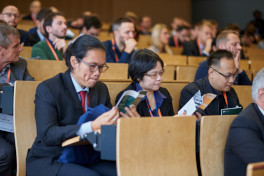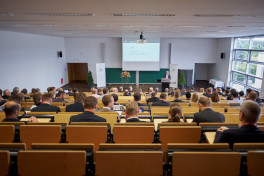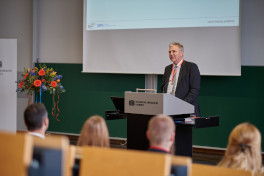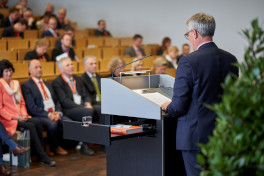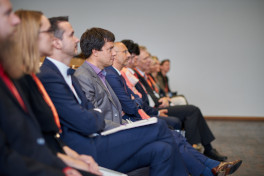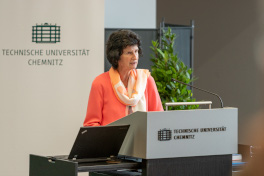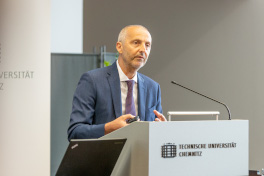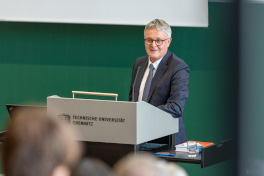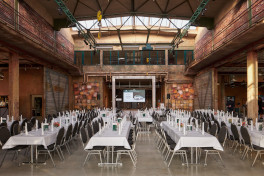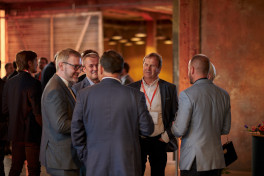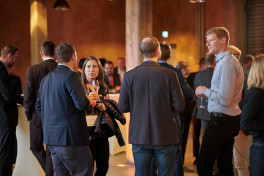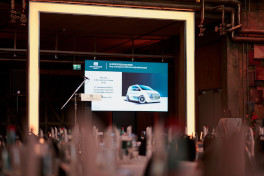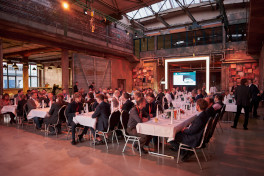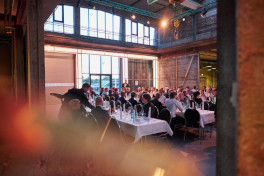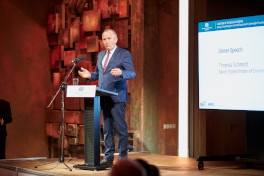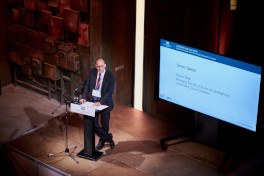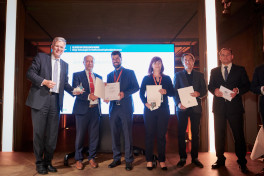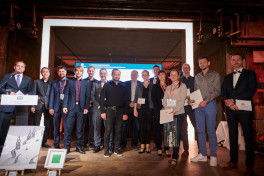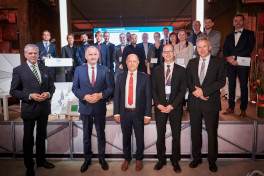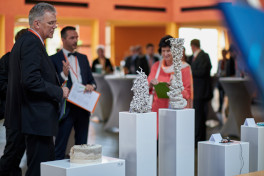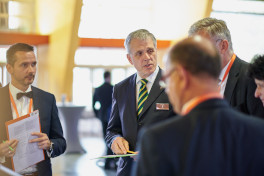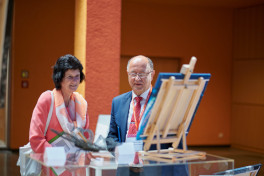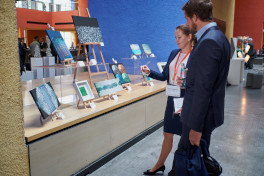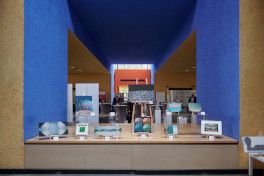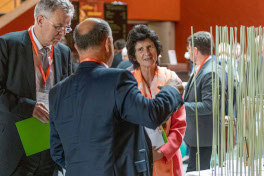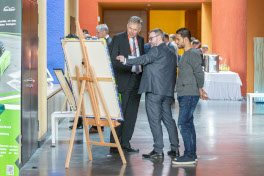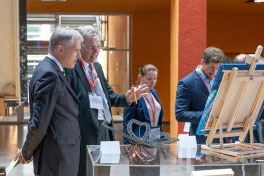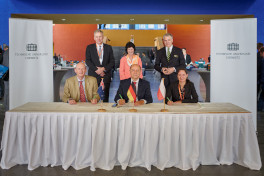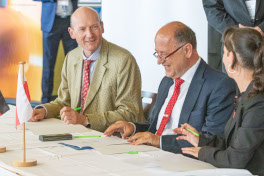International and Creative: Lightweight Technologies at the 4th IMTC 2019
Under the patronage of Saxony's Minister-President Michael Kretschmer, 67 experts from eight countries presented a wide range of specialist contributions on lightweight construction and technology developments from 18 to 19 September 2019 at Chemnitz University of Technology
Climate change and environmental protection are currently the most important fields of action for many countries. In order to achieve sustainable climate protection, pollutant emissions must be reduced as quickly as possible and new forms of mobility need to be identified. The key technology “lightweight construction” as a whole and hybridised lightweight construction technologies in particular offer promising solutions in this area. At the 4th International MERGE Technologies Conference (IMTC) from 18 to 19 September 2019 at Chemnitz University of Technology, more than 200 participants from New Zealand, Australia, Thailand, Portugal, Italy, Poland and Germany as well as numerous representatives of well-known companies and research institutions exchanged views on current developments and lightweight construction trends.
Under the patronage of the Saxon Minister-President Michael Kretschmer, the interdisciplinary conference offered a platform for a wide range of information. In parallel sessions, the topics “Materials and Semi-Finished Products”, “Manufacturing Technologies for the mass production of lightweight structures”, “Modelling and Simulation” as well as “Smart Systems Integration” were discussed. In addition, the scientists from the Cluster of Excellence MERGE cast a spotlight on the almost seven years of interdisciplinary lightweight construction research. A poster session and an accompanying trade fair rounded off the conference programme.
Conference programme
Technological progress and strong partnerships for more climate protection
Prof. Dr. Lothar Kroll, coordinator of the Cluster of Excellence MERGE and conference host, opened the event with a reminder: He referred to Earth Overshoot Day, a date calculated by the organisation "Global Footprint Network" when humanity's consumption of resources exceeds the Earth's capacity to regenerate those resources that year. “In 1990, this date was the 7th of December, this year we have already passed it, because it was the 29th of July,” Kroll said in his welcome address. “Especially in the transport sector, lightweight construction provides us with the tools to reduce CO2 emissions sustainably and globally. Let us seize this opportunity, discuss solutions, network and contribute to more climate protection with new innovations and modern forms of mobility. Not bans, but technological progress and strong cooperations should be the order of the day,” explained the MERGE coordinator.
Dr. Eva-Maria Stange, Saxon State Minister for Higher Education, Research and the Arts, also stressed in her welcome speech at the event's opening: “It is time to act. Investing in lightweight construction technologies means 'saving' in the right place. The IMTC has created the interdisciplinary and intercultural opportunity for science and industry to move even closer together on an international level”. The unexpected exclusion of the MERGE Cluster of Excellence from the current round of the Excellence Strategy of the Federal and State Governments therefore does not change the fact that the Free State of Saxony will continue to support the lightweight construction efforts of MERGE, said Stange.
The international character of the conference was also praised by Prof. Dr. Jörn Ihlemann, Vice President for Research and Junior Researchers at Chemnitz University of Technology, in his welcome speech. According to Ihlemann, cross-border exchange is particularly conducive to linking globally researched lightweight construction technologies and a broad range of basic and application-oriented research.
Werner Loscheider, Head of Division IVB4 - Construction Industry, Lightweight Construction/New Materials and Resource Efficiency at the Federal Ministry for Economic Affairs and Energy, also stressed: “We need strong partnerships and networks on the road to successful lightweight construction”. Thus underlining the cross-sectional character of lightweight construction and new materials as game-changing technologies as well as the necessary networking and cooperation structures. He believes that the key technologies of lightweight construction and new materials offer numerous “win-win-win opportunities” that should be exploited: for jobs, the environment and businesses.
Many contributions recognised and awarded at Conference Dinner
At the evening event of the 4th IMTC, Thomas Schmidt, Saxon State Minister for Environment and Agriculture, addressed in his dinner speech the importance of lightweight construction and technology development in his area of responsibility. Sören Uhle, Managing Director of the Economic Development Corporation of Chemnitz (Chemnitzer Wirtschaftsförderungs- und Entwicklungsgesellschaft mbH, CWE), highlighted the connection between urban development, the current “Days of Industrial Culture” (“Tage der Industriekultur”) and the application of Chemnitz for the title of European Capital of Culture 2025 in line with lightweight construction innovations.
The evening event also served to honour the winners of the Best Paper and Best Poster Awards: The best rated paper, entitled "Reflection based Strain Sensing using Metamaterials", was submitted by Toni Dirk Großmann and his co-authors from the Fraunhofer Institute for Electronic Nano Systems ENAS and Chemnitz University of Technology. Jens H. Lippmann and his co-authors from the Fraunhofer Institute for Machine Tools and Forming Technology IWU convinced the jury with their poster "Potential of a novel integration technology for high-strength welding of metal-FRP hybrid structures with the help of welding inserts (WI)" and secured first place in the Best Poster Award. In addition to a certificate and gift, they received a trophy in the form of the MERGE helix – manufactured at Chemnitz University of Technology.
A creative look at lightweight construction innovations
One novelty of this year's conference was the artistic approach to lightweight construction. 37 contributions, including photographs, graphics, sculptures and simulations, were presented in an exhibition during the event and rated by a jury of experts consisting of Dr. Eva-Maria Stange, Peter Patt (Member of the Saxon State Parliament) and Prof. Dr. Jörn Ihlemann as well as by the audience. Mr. Patt, representing the jury, honoured the winners at the conference dinner and presented them with prizes and certificates.
Contract affirms internationally sought-after lightweight construction competence
A Memorandum of Understanding establishing cooperation in the field of carbon fibre research was signed during the conference by Prof. Russel Varley of Deakin University in Australia, Prof. Dr. Lothar Kroll and Dr. Isabelle Roth-Panke, Head of the Endowed Chair “High-Performance Fibers and Processing” (Hochleistungsfasern und Verarbeitung, HLF) at Chemnitz University of Technology. Their aim is to develop a complete process chain in the future – “From fibre production to complex fibre-reinforced plastic components”. The function and structure of this process chain are to comply with industrial standards. In order to implement research projects and produce carbon fibres, the partners also agreed to make available the existing infrastructure in Australia and at Chemnitz University of Technology.
Due to their low weight and extremely high mechanical properties, carbon fibres are regarded as the supporting system for reinforcing ultra-light structures. However, the production of the fibres is still very energy-intensive and therefore expensive. Research at the endowed chair HLF, funded by the Polish company Jastrzębska Spółka Węglowa Innowacje S.A. (JSW Innowacje), is focused on using mined hard coal not to generate electricity in coal-fired power plants, but to produce low-cost fibres using chemical processes. Based on previous findings on the processing, isolation and purification of the precious raw materials from lignite and hard coal, the Chemnitz scientists and their foundation partners are researching which of the raw materials are also suitable primary products for carbon synthesis.


